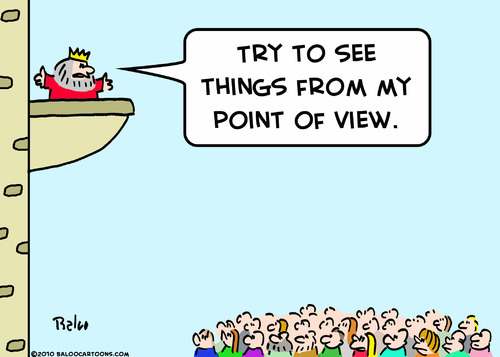Lesson 18: Perspective Taking
Attention

Learning Outcomes
Upon completion of this lesson's material, students will be able to:
- Describe Selman's Stages of Perspective Taking
Teaching
Selman's Stages of Perspective Taking
Piaget stated that preschool children's thinking is highly characterized by egocentrism. As a child's social world expands they encounter others, develop and refine "Theory of Mind" and develop more and more complex abilities for Perspective Taking.
Very young children don't understand that other people have different feelings and experiences from their own. But this perspective-taking ability develops over time until it is quite sophisticated in adults. Robert Selman, a psychoanalyst, developed a five-stage model to describe the development of perspective-taking.
Consider the following:
Holly is an 8-year old girl who likes to climb trees. She is the best tree climber in the neighbourhood. One day while climbing a tree she falls off the bottom branch but does not hurt herself. Her father sees her fall, and is upset. He asks her to promise not to climb trees anymore, and Holly promises. Later that day, Holly and her friends meet Sean. Sean's kitten is caught up in a tree and cannot get down. Something has to be done right away or the kitten may fall. Holly is the only one who climbs trees well enough to reach the kitten and get it down, but she remembers her promise to her father. |
If children of different ages are presented with this situation and asked such questions as, "If Holly climbs the tree, should she be punished?" "Will her father understand if she climbs the tree?" "Will Sean understand why Holly has trouble deciding what to do?" the children will give answers relevant to their age group:
Undifferentiated perspective-taking
Age: 3-6
Description: Children recognize that the self and others can have different thoughts and feelings, but they frequently confuse the two.
Response: The child predicts that Holly will save the kitten because she does not want it to get hurt and believes that Holly's father will feel just as she does about her climbing the tree: "Happy, he likes kittens."
Social-informational perspective-taking
Age: 5-9
Description: Children understand that different perspectives may result because people have access to different information.
Response: When asked how Holly's father will react when he finds out that she climbed the tree, the child responds, "If he didn't know anything about the kitten, he would be angry. But if Holly shows him the kitten, he might change his mind."
Self-reflective perspective-taking
Age: 7-12
Description: Children can "step in another person's shoes" and view their own thoughts, feelings, and behaviour from the other person's perspective. They also recognize that others can do the same.
Response: When asked whether Holly thinks she will be punished, the child says, "No. Holly knows that her father will understand why she climbed the tree." This response assumes that Holly's point of view is influenced by her father being able to "step in her shoes" and understand why she saved the kitten.
Third-party perspective-taking
Age: 10-15
Description: Children can step outside a two-person situation and imagine how the self and other are viewed from the point of view of a third, impartial party.
Response: When asked whether Holly should be punished, the child says, "No, because Holly thought it was important to save the kitten. But she also knows that her father told her not to climb the tree. So she'd only think she shouldn't be punished if she could get her father to understand why she had to climb the tree." This response steps outside the immediate situation to view both Holly's and her father's perspectives simultaneously.
Societal perspective-taking
Age: 14-Adult
Description: Individuals understand that third-party perspective-taking can be influenced by one or more systems of larger societal values.
Response: When asked if Holly should be punished, the individual responds, "No. The value of humane treatment of animals justifies Holly's action. Her father's appreciation of this value will lead him not to punish her."
As children mature, they take more information into account. They realize that different people can react differently to the same situation. They develop the ability to analyze the perspectives of several people involved in a situation from the viewpoint of an objective bystander, and they can even imagine how different cultural or social values would influence the perceptions of the bystander.
Assessment

There is no assessment for this Lesson